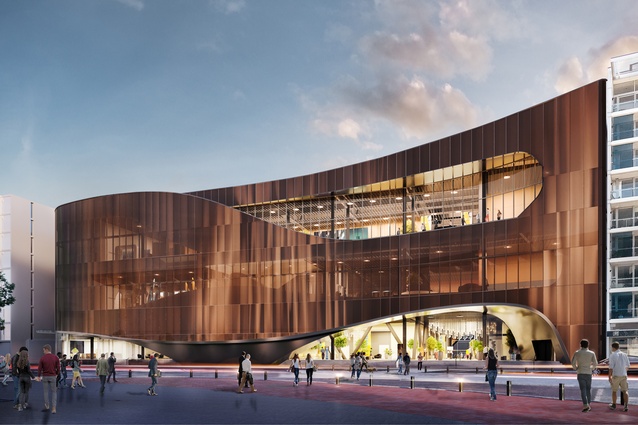Tākina taking shape
Drawing its inspiration from Wellington’s famed weather patterns (perhaps, most notably, the wind) and the city’s hilly topography and maritime setting, Studio Pacific Architecture’s Tākina Convention and Exhibition Centre will provide a unique sculptural form on Wellington’s waterfront when it opens in mid-2023. Work began on the 18,000m2 building, which will feature 10,000m2 of dedicated convention space across its top two floors and a 1650m2 ground-floor exhibition gallery to accommodate touring exhibitions, in September 2019. The primary structure is expected to be completed midway through this year, with the façade installation scheduled to begin early in the second quarter.
Project Director Stephen McDougall says Tākina will be clad primarily in a shimmering bronze glass; this references Te Ūpoko-o-te-Ika-a-Māui (Māui’s head of the fish) and will change in transparency throughout the day as it reflects the city’s variable weather. “What also makes it a distinctly Wellington building is the use of raw and natural earthy tones, materials and colours throughout. It’s a building designed for Wellington that celebrates its location and context.”
Tākina will achieve a five-star New Zealand Green Star rating upon completion, with sustainable features and adaptable systems resulting in 60 to 70 per cent fewer carbon emissions and using 60 to 70 per cent less energy when compared with similar buildings. It will be the first building in New Zealand to incorporate SEFAR glass technology, which uses a metal-coated fabric interlayer to provide solar shading, control glare and reduce energy transmission. Tākina will also harvest rainwater for toilet-flushing and evaporative cooling to reduce water consumption, and it will be future-proofed to accommodate onsite renewable energy generation via a roof-mounted photovoltaic array.
McDougall says Tākina’s fully base-isolated, structural diagrid design will ensure structural resilience and will enable a return to business as usual, as quickly as possible after an emergency event. Also, the ground floor sits 3.5m above sea level to mitigate the risk of surface water flooding entering the building.










